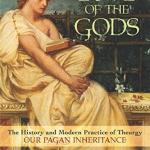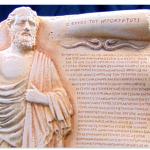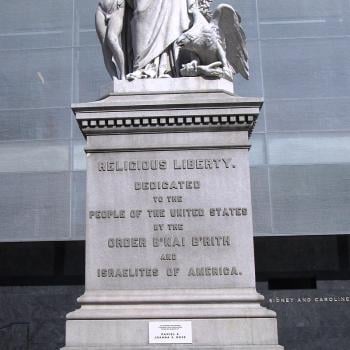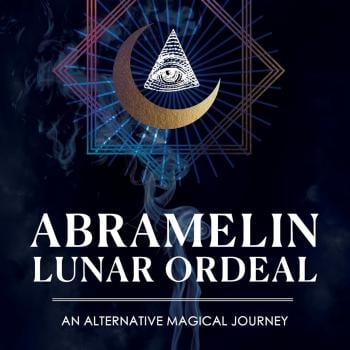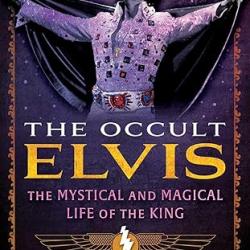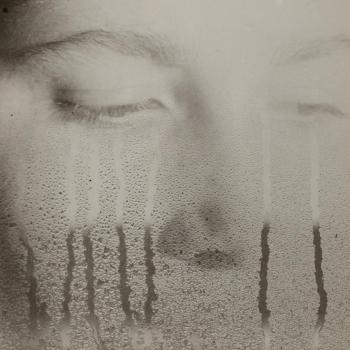Review of Nocturnal Witchcraft: Magick After Dark by Konstantinos
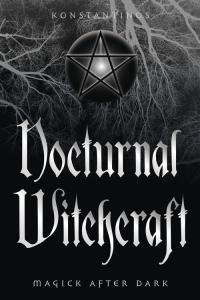
Nocturnal Witchcraft is aimed at the Nightkind – those who are drawn to the dark, the night, shadows, black clothes, as well as dark music, books and movies. Konstantinos presents a system culled from his own personal Book of Shadows which has obviously served him well. He stresses that there are four soul-types: good-light, evil-light, evil-dark, and good-dark. Konstantinos is focusing on the last of these to tap into Lunar Powers and the spiritual entities that prefer the darkness for magical operations. He explains that:
“The Dark balances the Light. Do not fear it but equally embrace it.”
Coming from a fearless standpoint, readers open themselves to embracing an ethical path to empowerment which would otherwise be denied to them:
“When the essence of the shadows and darkness empowers you, yet you don’t feel evil, you are good-dark.”
Born into a Greek Orthodox family living in America, Konstantinos discovered the Greek pantheon as a child. He later found himself drawn to the Sumerian and Egyptian deities. It was this background that he brought into formal Wiccan training. Nocturnal Witchcraft, however, goes well beyond what is normally taught in Wicca, with its usual stress on limiting workings to the light.
Konstantinos stresses that Nocturnal Witchcraft is an intermediate level text:
“This book is not intended to be a primer on traditional Wicca—we’ll be examining the Craft from the perspective of nightkind. If this is the first book you’re reading on Witchcraft, you may want to soon after supplement your reading with some of the new classics of modern paganism … “
He then goes on to list a number of suggestions.
Konstantinos claims that Nocturnal Witchcraft is just another tradition being presented in its entirety for the first time:
“Witchcraft has always been practiced in different ways by those with different interests. This is the primary reason there are so many traditions, ranging from Alexandrian to Celtic to Dianic, and on. Nocturnal Witchcraft can be thought of as the tradition that was always there, just never organized. It’s the tradition that naturally suits the spiritual and physical needs of many nightkind.”
Konstantinos states that the ultimate aim of his system is to reach the Dark Divine, otherwise referred to as The Source:
“I like that word for Divinity. It reminds us that we came from somewhere, and that we have someplace to ultimately return. … God and Goddess names provide us with a way to access Divine energy.”
Personally, I resonated with the Nocturnal Greek deities which he has invoked regularly. I’m always intrigued by non-traditional ways of working with the Greek deities.
Hypnos:
“His name is the Greek word for sleep, and the realms of sleep and dreams are his to command. It is likely that many ancient Greeks called on him for help with dream incubation, although he is also helpful with matters of receiving, in dreams, simple answers to questions. His mother is the ultimate embodiment of night in Greek mythology—Nyx.”
Nyx:
“The mother of Hypnos, the Furies, and several other Gods, Nyx is the embodiment of nocturnal ether in all its forms. She is one of the first beings to emerge from Chaos, according to a creation myth. In the beginning there was night, indeed. If you call on a universal form of the Goddess of Night, you will be tapping into much of Nyx’s energy. Seek her out for help with most anything … “
Hecate:
“This ‘Beloved of Zeus’ is arguably one of the oldest deities known to the Greeks and, as a crone aspect, may essentially be the mother of the pantheon. Great power and wisdom abound in Hecate, and she is often considered the Goddess of Witchcraft. Use her intense magickal aid when you have serious needs. She is part of a triad of Goddesses. … “
Selene:
“ … Hecate is part of a triad of Goddesses (and not the only female triad in Greek mythology). For those who become comfortable working with crone Hecate, calling on mother Selene at the time of the Full Moon may seem natural. The maiden aspect, Diana, can be invoked in a rite that will be performed before the moon reaches Full, and Selene can then be called to finish such an increasing or drawing rite.”
Furies (Alecto, Megaera, and Tisiphone):
“Another triad of Goddesses, these daughters of Nyx are known as the Angry Ones. Alecto can best protect against unseen enemies. Megaera should be called when you know someone is harboring ill will toward you. The most severe, Tisiphone can help you ensure that someone who wrongs you, becomes fully aware of the consequences that the universe has in store (not consequences you send this person’s way).
Kore/Persephone:
“Innocent Kore was dragged into the Underworld by Hades and eventually tricked into becoming his consort for part of each year—for what became the cold months. Upon the realization of her new role, she took on the name Persephone. Call on Kore when you feel blind to the effects of some forces in your life. Call on Persephone when you need guidance with a new part of your life that has begun and which you wish to control.”
Hades/Thanatos:
“Interestingly, Hades is described as ruling over an Underworld where the dead can either be in happiness (like the Summerland) or surrounded by lesson-teaching sorrows they’ve brought on themselves (the low realm). Invoke him to understand this aspect of the hereafter. To understand the process of moving on, you’d do better calling on Thanatos, who may very well be just another face of Hades, as Thanatos has been called the Lord of the Dead, and not just he who ushers them away.”
Three Idles (Clotho, lachesis, and Atropos):
“The three fates symbolize the afterlife process that souls go through, invoke them to learn about each phase of the process. Clotho creates our ‘life thread’, or helps us pick the kind of life we need to enter. Lachesis measures the length of it, determining how many important challenges and learning experiences will come our way. Atropos cuts the life thread to carry us back to the afterlife when it is all over, making Atropos another type of traditional Death.”
The choice of Selene and Diana (Artemis) in the above list is perhaps a little confusing at first glance, as they are certainly not “dark,” however, Konstantinos is tapping into the Wiccan Triple Goddess energy of Maiden, Mother and Crone.
All in all, Nocturnal Witchcraft presents a system of spiritual development for those whose tastes would be perceived as “dark” by outsiders. Those readers already familiar with Wicca, but wanting to explore energies darker than usually taught have a definite advantage. But those who are prepared to get up to speed by working through a basic Wiccan primer or two should not be deterred. It should be stressed that those readers wanting to work with dark energies with the intent to harm, should look elsewhere, as the path taught herein is an ethical one.
Tony Mierzwicki
Author of Hellenismos: Practicing Greek Polytheism Today and Graeco-Egyptian Magick: Everyday Empowerment.

